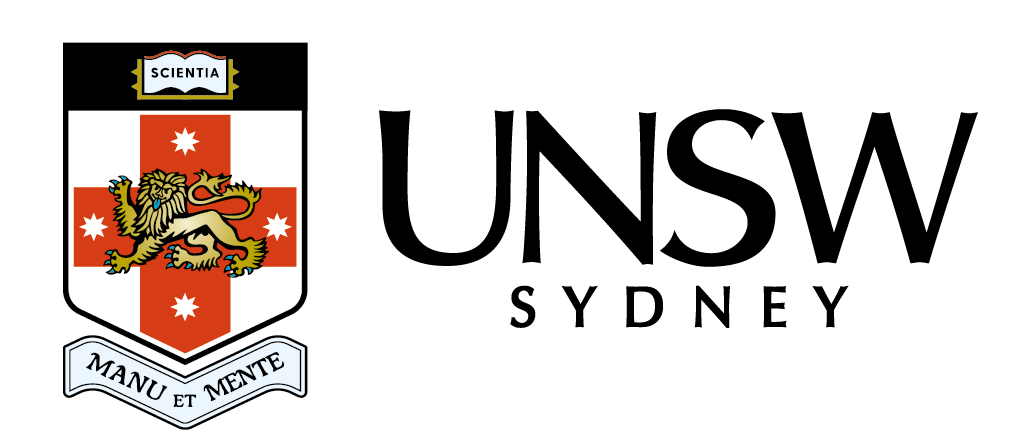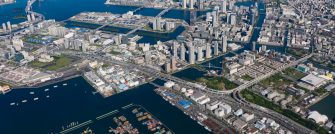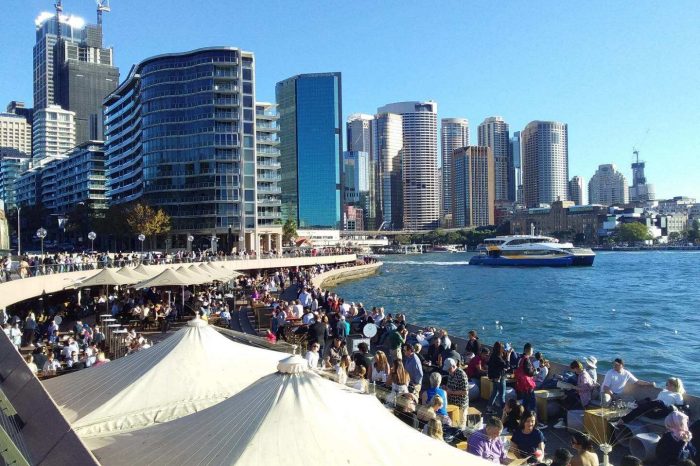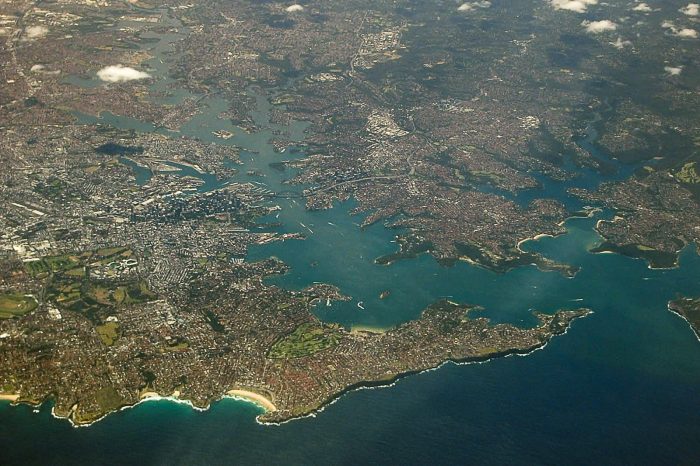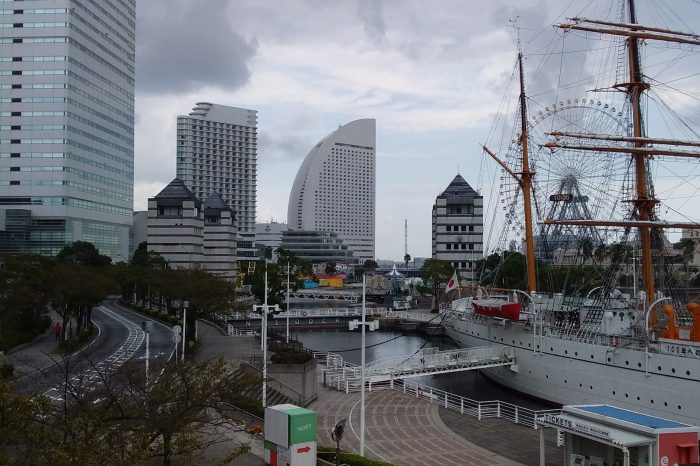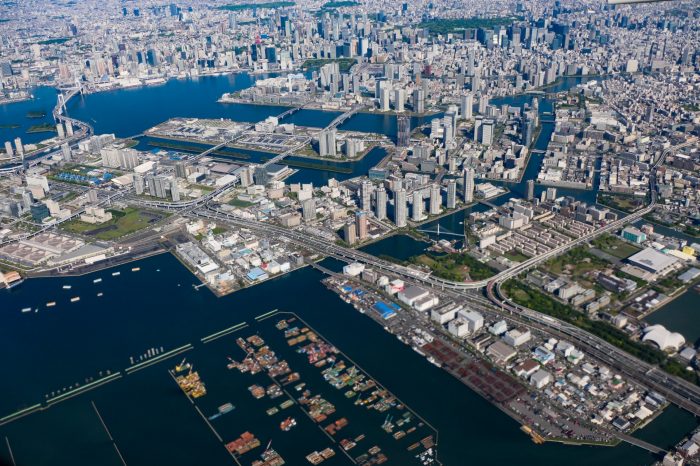Webinar via Zoom:
AM Session 9.30am-12.15pm (Australian Eastern Standard Time)
PM Session 2-4.30pm (Australian Eastern Standard Time)

24 November 2022
Date

Built Environment, UNSW
Venue
Overview
Adding to the recent impact of the global pandemic Covid which has changed the world, many serious problems caused by natural disasters and other factors (such as deforestation, overpopulation, resources depletion and widespread pollution) have become prominent on the planet since the end of the 20th Century. In particular, the last decade has seen a constant rise of global temperatures as direct consequence of the emission derived by the exploitation of oil reserves and the intensive use of fossil fuels for human activities.
Global warming is now among the fundamental cause of the current climate change at the turn of the 21st century, which will heavily impact on the urban ecosystem and well-being of world population. A direct effect is that the sea level is expected to rise as consequence of the ice melting while extreme weather phenomena (from heat waves to more violent typhoon and destructive hurricanes causing heavier rains) are exposing coastal cities to unprecedented destructive inundations and flood risks. In this context, recent studies have predicted that the sea-level is expected to rise between 1 and 4 meters by the end of the century, creating an unprecedented threat to the urbanized coastal cities in Australia and Japan and in general to the vast and densely populated megacities in Asia Pacific region.
-
Amid the rapid transformation of the climate and the natural environments, which will inevitably influence the survival of human settlements around the world, designers, administrators and engineers should start developing various scenarios and possible solutions to tackle the inevitable transformation which will occur in the near future while assuring that spaces and activities on the urban waterfronts provide social, cultural and economic benefits to their citizens.
This 1-day international on-line symposium (webinar) titled: Repairing Waterfronts in the Age of Global Warming: Learning from Australia and Japan scheduled on Thursday, 24 November 2022 is being co-organized by UNSW Sydney and Waseda University (Tokyo). The event will be an occasion to discuss on these themes and explore and compare possible strategies and solutions in the safeguarding of the coastal cities, the proposition of new visions for the re-use of the often-neglected urban waterfronts in terms of a more effective integration with the city whilst paying attention to the mitigation of the risks related with the effects of the unstoppable climate change.
Goal of the Symposium
The symposium intends to foster knowledge exchange and share different approaches while detecting and interpreting the challenges and opportunities that waterfront cities in Australia, Japan and elsewhere on the planet face in a period of climate change and high sea-levels threats.
At the same time, it will promote knowledge exchange and share different approaches while detecting and interpreting the challenges and opportunities that waterfront cities face in a period of climate change and high sea-levels threats through a cross-cultural comparison between Australia and Japan design and planning methodologies.
Reviewing case studies from Australia, Japan and/or overseas will make possible to explore urban design strategies that address infrastructure improvement, waterfront revitalization and redevelopment, and disaster mitigation caused by the sea level rise/flooding risks while utilizing this environmental threat as an opportunity to bring back waterfront to residents and raise their awareness towards climate change.
Contributors may explore themes which aims at integrating the 2 scales of architectural and urban design processes for the enhancement of the urban waterfronts. For instance, they may review and discuss case study and real projects aimed at activating, conserving and improving waterfront precincts to better integrate them into the city while making them more resilient to climate change; or they may investigate the notions and feasibility of innovative and radical alternative (nor conventional) urban model/prototypes suitable to orchestrate future developments of the coastal cities facing future challenges related with the global warming and the high sea level threats in the 21st century.
Case studies
Proposed themes/case studies:
- Urban waterfront redevelopment: past and present approaches
- Waterfront regeneration: case studies and best practice (Australia and Japan; or overseas)
- City and the water: prototypes and possible futures in the 21st Century
The entire webinar event will be organized and accessible via Zoom Link.
Program Information
- Call for Papers
- Instruction for the Papers
- Key dates
- Program details
A total of 8 speakers will be presenting at the symposium. Following the end of the symposium a final submission of a full paper of 6000-7000 words inclusive of notes and bibliography (Chicago style; approximately no more than 8 pics/images or charts in the paper) is expected. The document must be submitted in Microsoft Word. Language used is British English.
Initially all participants will present a title and an abstract of max 250 words, together with a short biographical note (150 words). Topics proposed should align with one of the 3 themes of the symposium.
The various contributions presented at the symposium will be further revised/edited and the compilation of essays will be collated into a final edited book to be published in the following year (tentative names of the publishers: Routledge, Wiley & Sons, Edward Elgar, Springer, Cambridge Scholars Publishing, among others).
Upon initial review and acceptance of the abstract, papers for the symposium will be submitted in MS Word format. While each author has the autonomy to develop their own arguments, in order to achieve consistency with all other contributions (and maximize the fit with the planned edited book after the symposium) it will be opportune to adhere as much as possible to the following general essay structure. All authors should give appropriate titles to section 2,3 and 4 and add subheading as suitable:
Suggested structure/outline of the essay is as follow:
- Background/Introduction
- Key historical framework or context and question/problem/issue/topic of inquiry to address
- Designer/Planner (some biographical information and key concepts regarding the themes of the symposium)
- Project(s) (overview and analysis/discussion of specific or some aspects of the particular project/case study where identified concepts are included)
- Conclusion (summarizing the key points discussed and main lessons for contemporary design, practice and/or research)
- References & Bibliography
The final essay for the edited book should be between 6000-8000 words, including notes/references and bibliography. The format should follow the Chicago style. Use Endnotes.
All authors are requested to keep the number of the illustrations/pictures/charts to 5 max (B/W and in JPEG format high resolution: e.g. 1M or higher and 300dpi) which shall be embedded in the text and then sent as separated files when the paper is submitted.
Please note that each author is responsible for obtaining the copyright/permission/credits for the reproduction of the images in the essay contributed.
Note on the Illustrations
Images cannot be placed as separated section at the end of the paper but should go alongside the text they accompany in each essay. Each illustration must be numbered and supplied as a separate file, e.g. fig1.1, and table 1.1. The files should be placed in the appropriate paper folder.
1 July submission of title and abstract (200 words) and short biographical note of author(s) (150 words)
30 September submission of 6000-8000 words paper (text + circa 8 images/charts)
24 November Symposium/webinar at UNSW Sydney
31 December 2022/31 January 2023 Final editing of the papers for edited book
Note:
All papers should be written in British English. Some funds are available to cover the costs for the copyediting and polishing of each paper.
Program of the Sessions (24 November 2022)
AM Session (Australian Eastern Standard Time)
Chair: Raffaele Pernice
| 9:30am welcome | |
| 9:45 - 10:10am presenter 1 | Carola Hein (Delft University of Technology) |
| 10:10 - 10:35am presenter 2 | Helen Lochhead (UNSW Sydney) |
| 10:35 - 11:00am presenter 3 | Raffaele Pernice (UNSW Sydney) |
| 11:00 - 11:25am presenter 4 | Shaowen Wang (UNSW Sydney) |
| 11:25am - 12:15pm plenary discussion | |
| 12:15pm - 2pm Lunch break | |
PM Session (Australian Eastern Standard Time)
Chairs: Raffaele Pernice & Tetsuya Yaguchi
| 2:00 - 2:25pm presenter 1 | Tetsuya Yaguchi (Waseda University) |
| 2:25 - 2:50pm presenter 2 | Ryoko Iwase (Kyoto University) |
| 2:50 - 3:15pm presenter 3 | William Galloway (Toronto Metropolitan University) |
| 3:15 - 3:40pm presenter 4 | George Kurumado (Takenaka Corporation, Tokyo) |
| 3:40 - 4:20pm plenary discussion | |
| 4:20 - 4:30 Final remarks and wrap up | |
Zoom meeting
View the webinar via zoom:
https://unsw.zoom.us/j/83679351440?pwd=V0U3WHZIeGVOOEZ6UVNaVzhRTmVIdz09
Participants
- Shaowen Wang (UNSW Sydney)
- Helen Lochhead (UNSW Sydney)
- Raffaele Pernice (UNSW Sydney)
- Carola Hein (IT Delft)
- Tetsuya Yaguchi (Waseda University)
- Ryoko Iwase (Iwase Studio Architect)
- George Kurumado (Takenaka Corp)
- Willam Galloway (Ryerson University)
Gallery
Sponsors and acknowledgments
UNSW Sydney – School of Built Environment, Waseda University – Department of Architecture.
The event is funded by the Australian Government Department of Foreign Affairs and Trade (DFAT) and the Australia-Japan Foundation (AJF) (Grant Ref. AJF2021113)



Contacts
Raffaele Pernice, UNSW Sydney
r.pernice@unsw.edu.au
Tetsuya Yaguchi, Waseda University, Tokyo
tetsuya.yaguchi@waseda.jp
